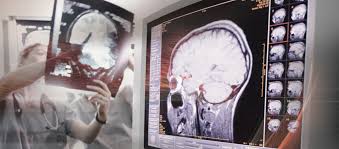Artificial Intelligence (AI) is no longer a futuristic concept—it is now actively reshaping the field of neurosurgery. From diagnosis and preoperative planning to intraoperative assistance and postoperative care, AI is streamlining neurosurgical workflows, improving efficiency, and ultimately enhancing patient outcomes.
Transforming the Neurosurgical Workflow with AI
1. Enhanced Diagnostic Accuracy
AI algorithms can rapidly analyze large volumes of medical imaging data—such as MRI and CT scans—to detect abnormalities like tumors, aneurysms, or hemorrhages with remarkable accuracy. These AI systems assist neurosurgeons by:
- Identifying patterns that may be missed by the human eye
- Reducing diagnostic time
- Enhancing early detection and intervention
2. Optimized Surgical Planning
AI-powered platforms aid in surgical planning by simulating procedures, analyzing risks, and mapping out optimal surgical paths. This improves:
- Precision in targeting lesions
- Minimization of collateral damage to healthy brain tissues
- Prediction of surgical complications
3. Intraoperative Guidance and Decision Support
During surgery, AI can be integrated with real-time imaging and robotic systems to provide:
- Enhanced visualization through image-guided navigation
- Robotic precision in microsurgical tasks
- Real-time data analysis to support quick, informed decisions
For example, AI-enabled microscopes can assist surgeons in identifying tumor margins or differentiating between normal and abnormal tissue.
4. Postoperative Monitoring and Recovery
AI tools also extend into postoperative care by:
- Monitoring vital signs and brain activity
- Predicting complications like infections or seizures
- Supporting personalized rehabilitation plans based on data analytics
This leads to faster recovery times and reduced readmission rates.
Boosting Efficiency in Neurosurgical Practices
– Reduced Operating Times
By streamlining diagnostics, planning, and intraoperative processes, AI can significantly reduce overall operating time, allowing hospitals to treat more patients with fewer resources.
– Workflow Automation
AI automates time-consuming administrative tasks such as:
- Scheduling surgeries
- Updating patient records
- Billing and documentation
This allows neurosurgeons and their teams to focus more on patient care and less on paperwork.
– Resource Optimization
AI systems can predict equipment needs, manage operating room availability, and allocate staff more efficiently, improving overall hospital productivity.
Challenges and Ethical Considerations
Despite its benefits, the adoption of AI in neurosurgery is not without challenges:
- Data Privacy: Ensuring patient confidentiality in AI systems is critical.
- Reliability: Surgeons must remain vigilant against over-reliance on AI.
- Cost and Accessibility: High-tech solutions may not yet be affordable for all healthcare institutions, especially in low-resource settings.
Looking Ahead
The role of AI in neurosurgery is rapidly expanding. Future advancements may include:
- Fully autonomous robotic surgery (under human supervision)
- Predictive analytics for personalized neurosurgical care
- Integration of AI with wearable neuro-monitoring devices
Conclusion
AI is revolutionizing neurosurgical workflow by increasing diagnostic accuracy, enhancing surgical precision, and improving operational efficiency. As these technologies continue to evolve, they will empower neurosurgeons to deliver faster, safer, and more effective care. Embracing AI is no longer optional—it’s essential for the future of neurosurgery. Would you like this adapted into a slide deck, executive summary, or visual report?
Also Read :
